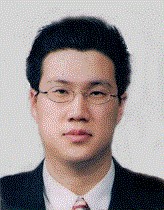CMOS Electronics Go Inside Mammalian Cell Networks

Speaker: Prof. Donhee Ham
Affiliation: Harvard University
Abstract: Parallel, intracellular recording from a large number of connected electro-genic cells has long been an outstanding challenge in neurobiology and cardiology. For example, the microelectrode array enables network-level recording with massive parallelism, but this extracellular interface cannot reach the signal-to-noise ratio of the patch clamp intracellular recording. But then the patch clamp electrode is not built for scalability and cannot achieve the network-level parallelism. In this talk, I would like to share our on-going work on CMOS-activated nano-bio interface array that successfully combines parallelism and high-sensitivity intracellular recording with mammalian cells in vitro [Nature Nanotechnology, 12, 460 (2017); submitted (2018)]. I would also like to discuss the application of this unprecedented capability in high-throughput pharmaceutical screening, functional connectome mapping, brain-machine interface, as well as in data science.
Biography: Donhee Ham is Gordon McKay Professor of Applied Physics and EE at Harvard. He earned a B.S. degree in physics from Seoul National University. Following a 1.5-year military service in South Korea, he went to Caltech for graduate training in physics. There, he worked in LIGO under Professor Barry Barish while in physics, and later obtained a Ph.D. in EE winning the Wilts Prize for the best EE thesis for his work on the statistical physics of electrical circuits. The intellectual focus of his group is on quantum and low-dimensional devices, neuro-electronic interface, NMR biomolecular spectroscopy for diagnostics, and integrated circuits. Research web: http://ham.seas.harvard.edu
For more information, contact Prof. Yuanxun “Ethan” Wang (ywang@ee.ucla.edu)
Date/Time:
Date(s) - Apr 30, 2018
12:30 pm - 1:30 pm
Location:
EE-IV Shannon Room #54-134
420 Westwood Plaza - 5th Flr., Los Angeles CA 90095
